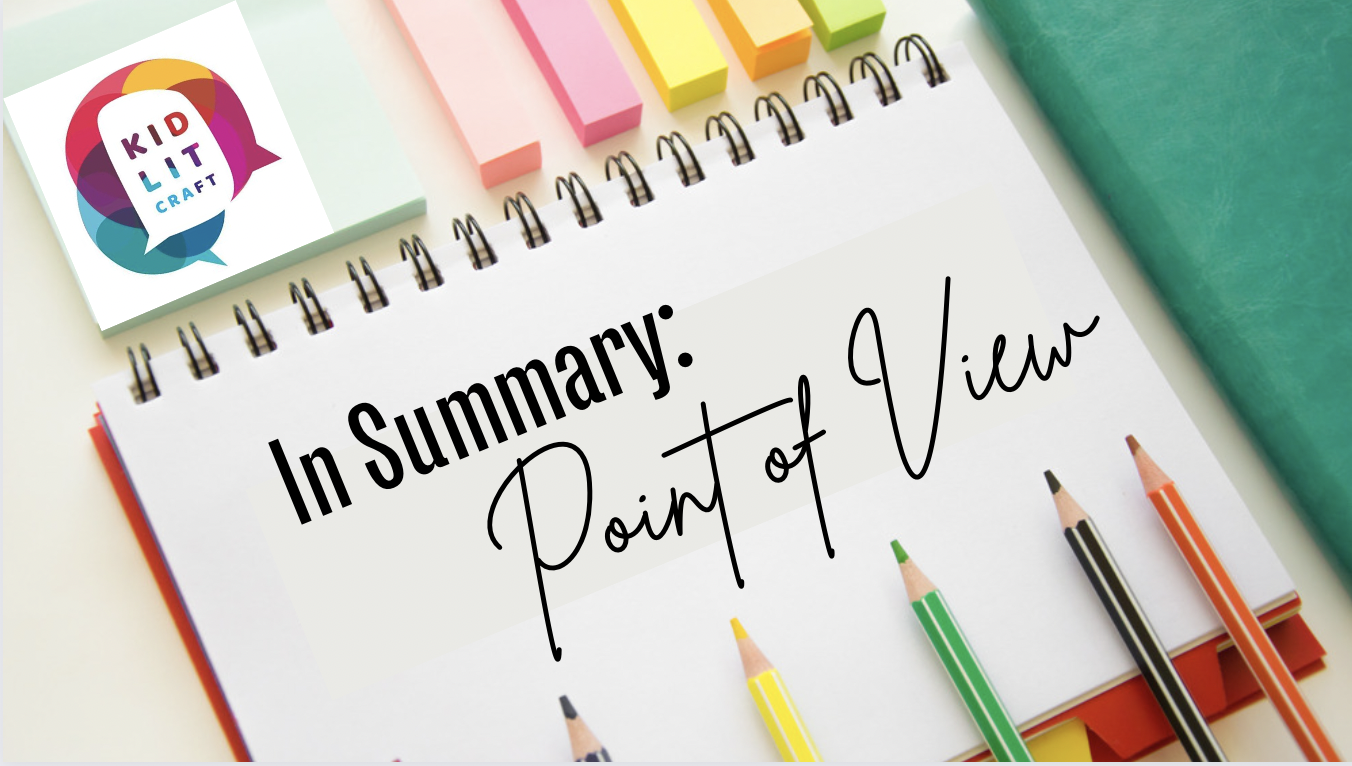This summer, we’re introducing a new series called In Summary, where we collect up some of our favorite posts on different craft topics. We hope you’ll click on a post or two now, and that you’ll be able to come back later when you’re struggling with a craft topic so you can find a wide range of posts by our contributors (past and present) to help you along the way.
Stories are told from particular points of view. You may have an omniscient storyteller, who knows all and can peek into character’s heads. You may have an invisible storyteller who is so close to the main character it’s as if they’re sitting on the character’s shoulder. You can have second person, where the narrator is addressing the main character (and the character and reader blend a bit). Or you can have the main character tell the story from their perspective. Each story can be told multiple ways, but finding the best point of view for your story is essential.
These posts detail how different authors approach point of view, and tools they use to craft each point of view effectively. Read on for advice and inspiration.
First Person
First person point of view means the main character is telling the story. It includes their version of events, what they witnessed, how they felt, and what they were thinking. It can create an intimacy with the reader–you are hearing directly from the character. Stacey Lee, in all of her YA books, uses first person POV. In this post, Kristi Wright explores what makes Lee’s character’s storytelling so effective.
Second Person (picture books)
It’s uncommon to use second person point of view in books at all, much less books for children. One huge exception is “How to” books, which often come in picture book form. (There are novels that use second person, for instance, Veera Hirnandani’s How to Find What You’re Not Looking For, or Rebecca Stead’s Goodbye, Stranger, which uses second person for some chapters.) Second person is often confused with direct address to the reader. For instance, in Jonathan Auxier’s middle grade books, he uses third person omniscient narrators who will speak directly to the reader (using “you”). But pure second person reads as if an invisible narrator is addressing the main character. The effect is to blend the main character and the reader together, which can draw the reader into the story in a unique way. It’s by far the most difficult point of view to write well, so there needs to be a very specific reason to use it. But if you do have a “How to” book, or another book that can be told best in second person, Kristi Wright’s post on second person point of view will show you how.
Third Person
Limited, alternating POVs
Third person limited means that the narrator talks about the characters by name and using “he/she/they” pronouns, but it’s as if the narrator is sitting on the main character’s shoulder and can peer into their brain, too. The narrator can only experience the world as the narrator does. For instance, if the main character is sitting in the front seat of a car and the hood is up, they may hear the mechanic talking, but they wouldn’t be able to see him. This post, by Sonya Doernberg, examine’s Anne Nesbet’s two points of view (both third person limited) in Cloud and Wallfish.
Multiple POVs
There are tricks to moving among multiple points of view, and Cassie Beasley’s Tumble and Blue moves between two main characters in third person limited, first-person character who uses direct address, and an additional third person limited who only appears near the end. In this post, I look at how Beasley transitions among them and makes choices about when to use which point of view.
Omniscient
The final type of point of view is omniscient, or “all knowing.” This kind of narrator talks about all the characters by name and with “he/she/they” pronouns. But an omniscient character knows things the characters don’t, can slip into any character’s perspective, and can let the reader in on meanings that might not be apparent to any character. An omniscient narrator may be sort of invisible, or they may have a distinct voice and personality. In The Penderwicks, Jeanne Birdsall’s omniscient narrator starts with a very strong voice, and then chameleons her way through sections of more limited third person from the perspective of each of the four main characters. In this post, I’m most interested in figuring out how Birdsall moves between the sisters’ perspectives in ways that don’t get confusing for her readers.
As you consider the point of view (single or multiple) you may use in your story, we hope these posts can give you the tools to make the best choice for your story, and strategies to make that choice the most effective it can be. Happy writing!
Anne-Marie Strohman (co-editor) writes picture books, middle grade novels, and young adult short stories and novels. She is trained as a teacher, an editor, and a scholar, specializing in Renaissance Literature. She holds an MFA in Writing for Children and Young Adults from Vermont College of Fine Arts and is an active member of SCBWI. Find her at amstrohman.com and on Twitter @amstrwriter.

COMMENTs:
0